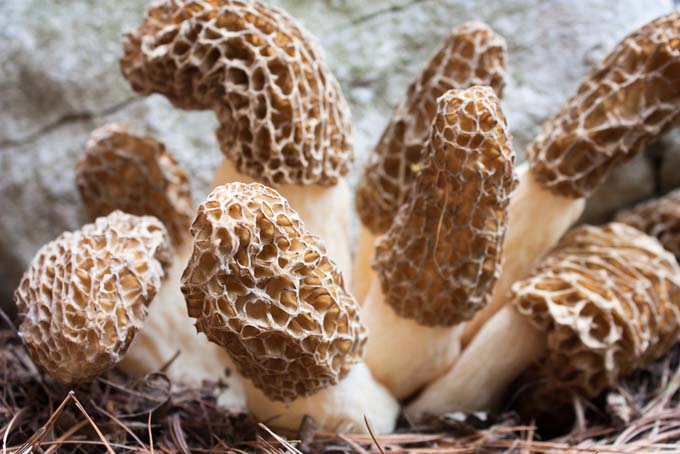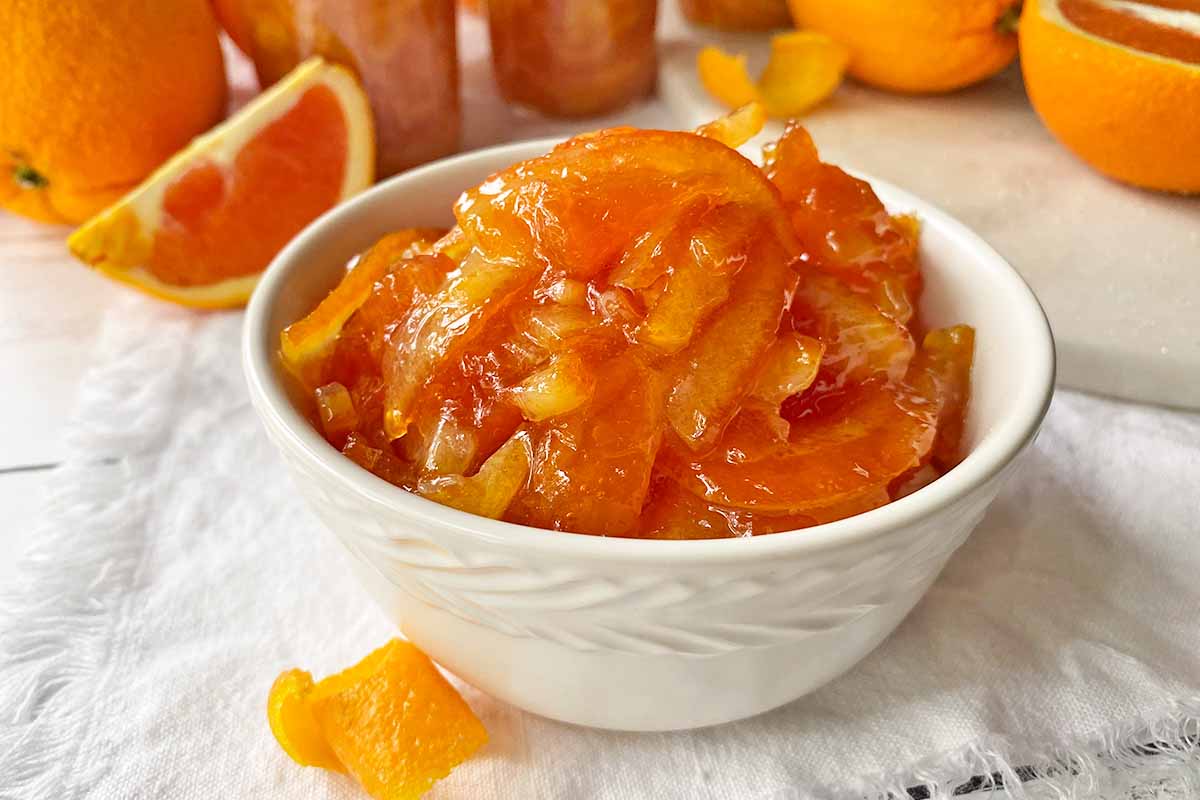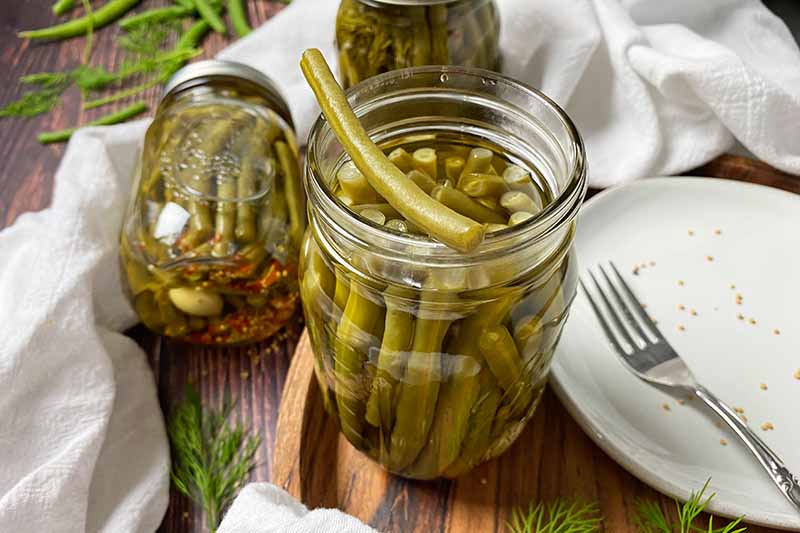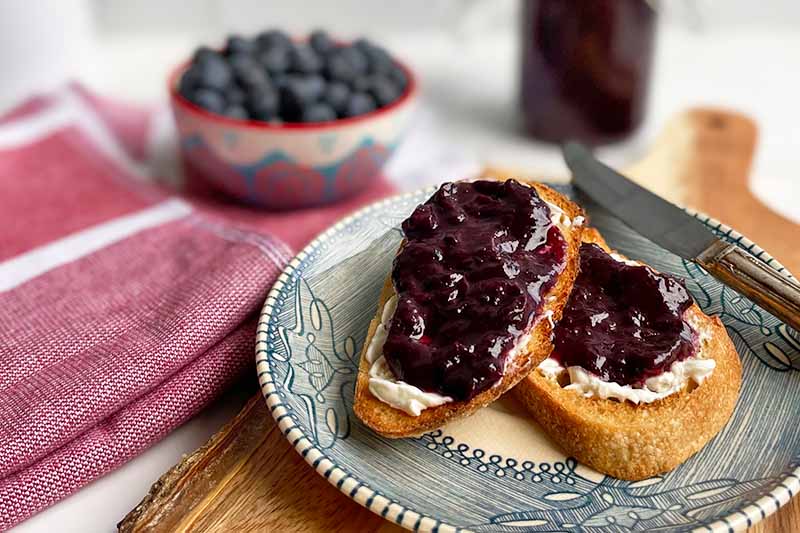Dehydrating morel mushrooms is a common practice among individuals who harvest a large amount during mushroom season (lucky you!)
The dehydration process is the number one method that allows you to savor the taste of these even during the off-season, as they do not freeze well (though it is possible).

Some say the best location to hunt for morels is in the Midwest, but you can find them all over the US, Europe, and beyond. This area seems to have the best vegetation and temperature to grow these tasty morsels. Look for them sprouting from mid-April to mid-June.
[the_ad_group id=”1077″]
They usually appear after a series of spring showers, prior to the heat of summer setting in. Morels often reappear in the same spot year after year, and many hunters keep their “spots” a well guarded secret.
These fungi (yes – they are fungi) seem to prefer hillsides with plenty of rotting logs, but they may appear in unexpected spots as well. You may not find them where you’d expect – this is one reason why this variety isn’t commercially farmed.
Three basic processes exist for dehydrating morels. The first involves the use of a dehydrator. Here’s what you need to do:
1. First, wash the specimens in cool water to remove any debris.
2. Pat dry with a paper towel. Trim the stems if necessary.
3. Slice them in half, from the tip through the base of the stem.
4. Place in a single layer on each level of the dehydrator. Follow the manufacturer’s instructions for proper drying times, or check out our ultimate guide to food dehydration – it has a bunch of helpful drying times listed at the bottom.
For those individuals without a dehydrator, you can also use your oven to prepare the mushrooms.
1. Wash, dry, and cut the same way as previously outlined.
2. Cover the bottom of a cookie sheet with parchment paper. Lay out sliced mushrooms in a single layer. It is alright to have the sides touching, but they should not overlap.
3. Bake at 250°F for approximately 6 hours. During the baking process, crack open the oven door a slight amount. This allows the moisture to escape during the drying process.
Finally, the oldest known way to dry morels is to string them up and dry them in the sun.
1. Wash and prepare the individual pieces as before.
2. Cut a piece of cotton packaging string (kitchen string) that’s approximately six feet long. Thread a large-eyed needle, and insert through the center of a morel slice. Slide the mushroom along the cotton string until it’s within 12 inches of the opposite end.
3. Repeat the process with the remaining pieces, making sure they do not touch one another.
4. Hang the string in a sunny location. If you hang the string outside, be sure to bring it in at night to prevent dew from setting on it, which could introduce mold. Allow to dry in the sun for a minimum of two days.
The trick to drying morels is to make sure they are completely dry. Here’s how to test the mushrooms periodically during the drying process:
Break a small portion from the main body. It should snap when broken. If it is mushy or spongy, then moisture still exists within the cap.
Place the dehydrated specimens in a glass jar with a lid or in a resealable plastic bag. These will keep for up to six months if prepared correctly. You can further extend this by using vacuum sealing, placing them in the freezer after they’re dried (though this isn’t always recommended, as it can introduce moisture) or adding some oxygen absorbers to the sealed packaging.
Dehydrated morel mushrooms may be reconstituted by soaking them in enough cool, salted water to cover for 30 minutes, or by boiling them for 10 minutes at a low boil.
Be sure to reserve this water for cooking, as it is full of antioxidants. It makes a great addition to soups and sauces. Just let the sediment settle before adding the liquid on top to dishes.
And if you need a bit more info on the prep process, read our article on how to properly clean your mushrooms.
What’s your favorite way to dry the season’s bounty? Let us know in the comments!
About Lynne Jaques
Lynne is a stay-at-home mother of two boys. As a former US military officer and the spouse of an active duty US military member, Lynne enjoys traveling the world (although not the moving part!) and finding new cuisine and methods of preparing food. She also has the habit of using parenthesis way too much!





I absolutely love mushrooms! Especially morels. I am putting a dehydrator on my christmas wishlist. I buy mushrooms regularly but don’t always get to use them before they go bad. A dehydrator would prevent that. I can’t wait!
I tried out this this fall because my harvest for mushrooms was just over the top this year and I have to say that it worked out great! I love all the strategies and ideas and recipes that I see when I visit your blog! Awesome blog to be following!
I have never had morel mushrooms (not sure if they are common here) but I love portobello and oyster mushrooms grown here. I am not sure what the taste differences will be? Is it possible to dehydrate other mushrooms such as portobellos are well?
Is there a difference in how you dehydrate different kinds of mushrooms? I would assume they are all dehydrated the same way but I’m starting to question that assumption. Is it because some carry more water than others?
I am guessing that you would dehydrate all types of mushrooms the same way. A dehydrator sounds really good right about now. Especially when you already have something in the oven. There are so many types of mushrooms to learn so now I know one more type. It’s too bad these mushrooms can’t be commercially sold yet.
Morels are the best mushrooms out there. My mother-in-law makes the best morels. They are such a treat; we only get them about once a year. We didn’t have a good year last year. I haven’t thought about dehydrating them, I bet that works really well!
I have heard a lot of mushrooms benefits, and to be honest, dehydrated mushrooms seem to be a really good option when it comes to me. Sadly, I don’t have a dehydrator but I have seen a lot of them around here and seriously, it seems like one of the best options when it comes to dehydrating food, it’s way faster and is not that expensive, so I will consider this option seriously.
I’m really looking forward to dehydrated veggies/fruits lately.
WE dehydrate a couple ways. Stringing them up from cap to stem is a great way when you are on a road trip since you can hang them in the car or outside when you’re camping and not driving. Looks like a Morel Necklace. But when we set out for the annual spring harvest in british columbia, canada we bring our portable trailer dehydrator and can dry a few hundred pounds at a time using natural wood heat and fans. Sun drying is the easiest and can be effective if you have screens, stainless steel is best but other metal or plastic is fine too. Happy foraging and mushroom eating!
250F for 6 hours is a great way to ruin morels
Hello, Jesse! If you are concerned about the inconsistencies of your own oven, you can choose to dehydrate them in a food dehydrator.
I wish I had seen this as I tried it after reading this article and ruined a pound of morels. 2 hours in and they were burnt to a crisp.
This article is in need of an update- I wouldn’t personally recommend anything higher than 110-125F for dehydrating delicate morel mushrooms. Unlike food dehydrators, most ovens do not have a setting available this low, but keeping the oven door open, rotating the mushrooms often, and keeping a close eye on them can help to achieve the intended results.